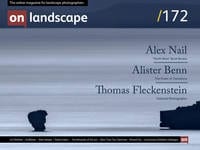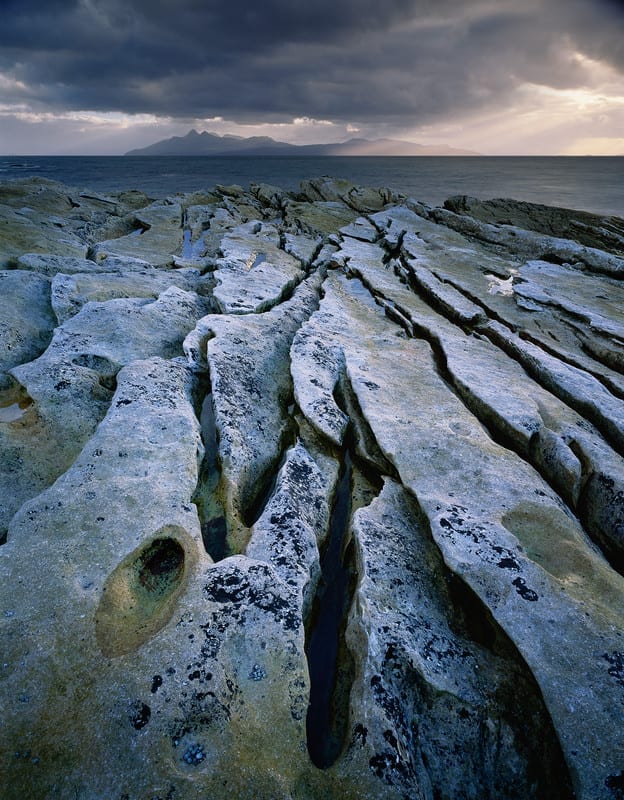Kåre Selvejer chooses one of his favourite images

Kåre Selvejer
Is a Danish amateur photographer working with both Large Format film cameras as well as digital cameras. He is an escapee from corporate life where he spent 30 years working in the wine business. Kåre is keen walker and loves to spend time with his camera along the coast and in the woods.
One of the things I realised when Charlotte kindly invited me to write an End frame article was that I probably do not have one single favourite image. There are, however, several photographers I admire and whose work has both inspired and influenced me on my own journey in photography. This I presume will be the case for most On Landscape readers. Many of the photographers I admire will be familiar names to Onlandscape readers, and one of the most important for me is Paul Wakefield.
The first time I was exposed to Paul’s work was when I years ago bought a National Trust book titled “Coast” which in addition to Paul Wakefield’s work also features images from David Noton and Joe Cornish, the latter being the main contributor of images to the book.
Coast contains many beautiful images, but it was Paul Wakefield’s image on the front page with a view from Irelands County Down beech towards Mountains of Mourne that made the strongest impact on me. This was an image I felt transmitted a very strong sense of the place with its dramatic sky with clouds partly obscuring the mountains and motion blurred marram grasses in the foreground.
This image led me at some point to Paul’s Internet homepage showcasing both his personal work as well as some commissioned work. While studying Paul’s work there was a point when I realized that these were landscape images shot under conditions where there was never any direct sunlight on the scene. I was almost in shock. Paul was making very strong images working almost exclusively in light conditions which I in my inexperience at that time found more or less impossible to work with.
Studying Paul’s images it became clear to me that I had slowly but surely placed myself in a straitjacket of chasing what Sweden’s Hans Strand calls “hallelujah-light” at the extremes of the day. If the weather did not meet certain criteria I would simply stay home. I had somehow developed an unhealthy tendency to previsualize what I was going to shoot even before I left my house. If the weather or the scenery did no turn out the way I had previsualized – and unsurprisingly it rarely did - I would all too often block up creatively and head home with a feeling of frustration.
Paul’s images became a turning point for me. Amongst the lessons I learned was that soft, diffuse light can be an essential ingredient to bring out the subtle tones and small details in an image.
In 2014 when Paul released his latest book, The Landscape, I bought it without hesitation. And I was not disappointed. The Landscape is a great narrative of Paul’s work and a quiet and meditative tour de force showing that Paul is equally at home photographing the grand vista, the intimate landscape, abstractions and always with great quality and a stunning ability to master visually complex scenes and transmit a strong sense of the place.
So while I initially stated I do not have a favourite image there was one image that kept popping up in my mind when thinking of an image for End frame. It is the image featured on the front page of Paul Wakefield’s The Landscape: The Isle of Rhum taken from the Isle of Skye.
The image has been shot in the upright format – for which I feel the aspect ratio of the 4 x 5 view camera is so well suited – and it enhances the feeling of depth in the scene. There is a sense of drama and even a touch of melancholy in the soft yet dramatic light being just sufficient directional and beautifully orchestrated in order to bring out the details in the foreground where strong lines draws the viewer into the scene. The colour palette is subtle and consists mainly of shades of grey with tones of green algae and there is just a touch of warm light in the otherwise dark and dramatic sky sending its rays down to the distinctive silhouette of the Isle of Rhum.
For me, this is a classic seascape showing how Paul works with the light and it is an image that creates a great sense of the place and invites you to study it in detail. It is the kind of image I could only dream of creating and would be more than happy to hang on my wall.


